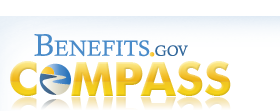

Inside This Issue
A Message From Al Sloane, Benefits.gov Program Director
Learning About Government Financial Assistance: Grants vs. Loans
October is Breast Cancer Awareness Month
Spotlight on Healthcare
Disaster Survivors Use Mobile Technology for Faster Assistance
Benefits.gov Buzz
Stay Connected to Benefits.gov!
Help Yourself With Benefits.gov—Find What You're Looking For—Fast
Benefits Summary

About Us
About Benefits.gov
Benefits.gov Partners
About GovLoans.gov


|
| A Message From Al Sloane, Benefits.gov Program Director |
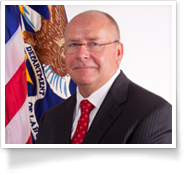 |
Welcome to the newest edition of the Benefits.gov Compass eNewsletter. This publication highlights some of the most well-known government benefit programs available today, and those you may not have heard of yet—but should. In addition to keeping the Benefits.gov website up-to-date with the latest information about Federal assistance, my staff is also focusing their efforts on creating news articles about programs our visitors ask about most, such as Federal government assistance and Medicaid/Medicare. Keep reading to learn more about these topics.
I hope you enjoy this edition of the Compass, and I encourage you to visit Benefits.gov to learn more about the 1,000 programs featured on our website, which you may be eligible for.
We welcome your input—click here to share your feedback with us. And we hope you’ll “Like” us on Facebook or Follow us on Twitter.
|
Back to Top
 |
| Learning About Government Financial Assistance: Grants vs. Loans |
 |
Are you looking for financial assistance, but not sure where to start? Benefits.gov can help, but first you should know some basic facts.
Government financial assistance serves various important purposes such as job training, nutritional assistance, education, health care and other needs. To receive government assistance, you must complete an application and meet specific eligibility requirements as outlined by each program. Not all assistance programs provide cash payments, and may have conditions and limitations. Government financial assistance comes in many forms; two commonly searched items on Benefits.gov are grants and loans. Keep reading to learn the differences between the two.
Grants – Federal grants are awards of financial assistance to an individual and/or organization. Grants are used to carry out a government authorized purpose, and are not provided as personal benefits or assistance. Most grants are awarded to universities, researchers, law enforcement, cities, states, counties, and non-profit organizations. We recommend www.Grants.gov to search and apply for grants. There are also multiple resources on Grants.gov to guide you step-by-step through the Federal grant application process.
Loans – Are different than grants because they are awarded to an individual as a personal benefit or assistance. You are required to pay back a loan, often with interest. If you are interested in a loan program, you can visit www.GovLoans.gov – your gateway to loan information. Whether you are looking for student loans, help with housing or business needs, or disaster relief, GovLoans.gov can direct you to loan program information that’s best for you.
Now that you know the basics about government financial assistance, what can Benefits.gov do for you? As the official benefits website of the U.S. government, we can help you start your benefits search by connecting you to assistance programs you may be eligible to receive. Visit our homepage and try the following options:
- Use the Benefit Finder – Click “Start Now” to begin our confidential eligibility questionnaire. Your answers will instantly generate a list of benefits tailored to your specific needs across all 20 assistance categories.
- Browse Benefits – Have a specific need? Select "Benefits" at the top of the page to browse benefit and assistance programs by category, state, or Federal agency.
 |
Help for Difficult Financial Times
If you are in need of additional assistance, visit USA.gov’s bilingual online campaign entitled Help for Difficult Financial Times / Ayuda para superar dificultades económicas. The campaign was launched in an effort to connect citizens with tools and information to help them cope with financial challenges. The websites USA.gov and GobiernoUSA.gov have compiled government resources for easy access to information in five main areas: jobs, housing, money/credit and debt, family, and health.
Parents: Check out USA.gov’s comic strips that offer tips on how kids can help their families save money. |
|
Back to Top
 |
| October is Breast Cancer Awareness Month |
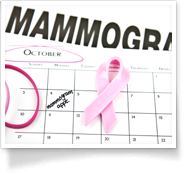 |
Chances are—you or someone you know—has been impacted by breast cancer. In the U.S. alone, 1 in 8 women receive a breast cancer diagnosis, and 40,000 women die from the disease annually according to the Centers for Disease Control. Although it’s rare, men get breast cancer too, which is why every October, the organizers behind National Breast Cancer Awareness Month, intensify their efforts to let everyone know there are steps they can take to beat the odds. Here’s how:
Early Detection—Medical experts recommend monthly self-exams to detect signs of breast cancer, such as a lump. However, in the early stages of breast cancer, a lump is hard to detect, and there aren’t any other outward signs or symptoms. Therefore, a mammogram—an X-ray of the breast—is very important. The National Breast and Cervical Cancer Early Detection Program offers free or low-cost mammograms to eligible women. Women age 40 and above should talk to their doctors about when and how often to get a mammogram.
Reduce Your Risk Factors—Smoking raises your chances of getting breast cancer along with drinking alcohol, but did you know that a poor diet and even carrying a few extra pounds can raise your risk too? By maintaining a healthy weight and regularly exercising, you can lower your risk. The U.S. Department of Agriculture’s website offers tips and nutrition recommendations on how to build a balanced diet on ChooseMyPlate.gov, and you and your family can take part in the Let’s Move campaign led by First Lady Michelle Obama. Finally, share your family history with your doctor to help him/her determine when you should start getting mammograms and the frequency.
Benefits.gov features over 1,000 forms of government assistance with many programs focusing on healthcare, good nutrition, and exercise—all of which are key to preventing breast cancer and many other diseases. Click the “Start Now” button on the Benefits.gov homepage to use our free and confidential Benefit Finder.
The medical journal, Nature, published a breakthrough study on September 23, 2012, where researchers analyzed the genetics of cancer—finding four major classes of the disease. The medical community is very hopeful this could potentially lead to more effective drugs to treat the disease—read the full report now. |
|
Back to Top
 |
| Spotlight on Healthcare |
 |
This past August, we placed a spotlight on some of the major healthcare reforms contained in the 2010 American Care Act (ACA). Even before the ACA was passed into law, two major healthcare initiatives were already on the books for decades:
Medicare—This Federal program provides health insurance benefits for Americans 65 or older, younger people with long-term disabilities, and people with End Stage Renal Disease. Medicare covers deductibles and copayments, hospital insurance, home health visits, hospice care, doctors' fees, services, and tests. To talk with someone about Medicare, call their toll-free number, 1-800-772-1213. Anyone with hearing or speech disabilities may call the TTY-TDD number on 1-800-325-0778.
Medicaid—This program is a Federal/state partnership for low-income people under age 65 who have exhausted Medicare benefits, people with disabilities, and some families with children. Medicaid pays for hospital care, doctors' services, nursing-home care, home health services, family planning, and screening. Medicaid benefits vary depending on where you live. Visit www.Medicaid.gov to see what Medicaid benefits your state offers. To speak with someone, you can call the Medicaid hotline toll free, 1-877-267-2323. Anyone with speech or hearing disabilities can use the TTY toll-free number on 1-866-226-1819.
To see what government healthcare options are available to you, visit Benefits.gov and click “Healthcare” on our Browse by Category page. If you’re searching for insurance options, visit Healthcare.gov to use their free tool. To check your eligibility for healthcare-related programs and over 1,000 other forms of government assistance, use our simple Benefit Finder by clicking "Start Now" on the homepage.
|
Back to Top
 |
| Disaster Survivors Use Mobile Technology for Faster Assistance |
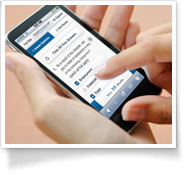 |
Following a natural disaster, electricity and computers may be unavailable in many affected areas; however, mobile devices are increasingly becoming a communications lifeline for survivors. Case in point—this past summer, over 17,000 Hurricane Isaac survivors used their mobile devices to access the DisasterAssistance.gov site to:
- Identify potential forms for assistance
- Submit applications
- Update information
- Check the status of their applications.
Because mobile devices are often the only means of communication or information access after a natural disaster, tools such as DisasterAssistance.gov are an essential connection—enabling survivors to find and apply for aid faster than ever before.
DisasterAssistance.gov’s mobile site makes it easier for smartphone users – whether on an Android, Blackberry, or iPhone—to find and apply for assistance from 17 Federal agencies. This one-stop shop for disaster assistance information and programs, enables survivors to determine if they are potentially eligible for 72 different forms of assistance ranging from Disaster Supplemental Nutrition Assistance to Disaster Legal Services. From immediate to longer-term disaster recovery programs, both the mobile version and website—which Benefits.gov helps manage—reduces the time needed to apply for and check the status of claims, and decreases redundancy in application forms and processes.
The Federal Emergency Management Agency (FEMA) blog explained the benefits of the DisasterAssistance.gov mobile functionality:
”Not only can users submit and check the status of their application on a mobile device, they can also add or update contact information should they move or become displaced, as is common following disasters. On-the-go survivors can also add or update insurance and bank information, as well as find information and referrals…”
After answering 11 basic questions, disaster survivors receive a personalized list of the forms of assistance they may be eligible for. The questionnaire automatically refines and updates the disaster survivor’s tailored list of assistance programs following each question answered. All responses are anonymous.
To learn if you qualify for disaster assistance programs, simply visit DisasterAssistance.gov from your mobile phone. Desktop computer users can click “Take Questionnaire” on the DisasterAssistance.gov homepage to view the full-site version of the questionnaire. |
Back to Top
 |
Benefits.gov Buzz |
 |
The following publications recently featured Benefits.gov as a valuable resource for citizens. To read the full story, click on the article title below or "Read more…"
5 Best Government Websites that Just Work
Socialdriver.com
Governments are complicated. Benefits are complicated. Much to the relief of bureaucrats everywhere, Benefits.gov is not complicated. Through their handy ‘Benefit Finder’ you can take a look to see which government assistance programs…
Read more…
Benefits.gov Celebrates 10 Years of Serving You!
Disability.Blog
This year, Benefits.gov, the official benefits website of the U.S. government, celebrates its 10th anniversary of citizen service. Over the last decade, the Benefits.gov Program has increased citizen access to government benefit information…
Read more…
Check out what our Facebook Fans are posting about us and what our Twitter Followers are retweeting!
Facebook.com/BenefitsGov:
Facebook Recommendations:
- “Even though I am doing missionary work in a foreign country, I relish every bit of information I can get about home.”
- “Great stuff; I've used this site multiple times.”
Facebook Shares:
Benefits.gov wants you to be informed about the healthcare reforms and changes in 2012. Read article: http://bit.ly/QFAN5N
9 Likes, 3 Shares
As the temperatures rise this summer, keep your home cool and help protect the environment by participating in energy related benefit programs and energy conservation. Read more here: http://bit.ly/RtnAm6
9 Likes, 5 Shares
Twitter.com/BenefitsGOV:
@BenefitsGOV: The National Breast & Cervical Cancer Early Detection Program helps women gain access to lifesaving screening programs: http://bit.ly/9e8GR7
Retweeted by 18, 2 Favorites
@BenefitsGOV: Have you seen an ad for "free money?" Learn the FACTS about gov’t assistance here: http://bit.ly/hcrewR
Retweeted by 9, 7 Favorites
@BenefitsGOV: Applications are still open for Veterans Retraining Assistance #VRAP. Share this program w/ loved ones who may qualify: http://tiny.cc/k42tkw
Retweeted by 12, 1 Favorite
@BenefitsGOV: Did you know that benefit programs vary by state? Select your state from the interactive map to learn more: http://bit.ly/9DH0Tb
Retweeted by 7
|
Back to Top
 |
| Stay Connected to Benefits.gov! |
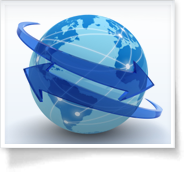 |
Benefits.gov is dedicated to keeping citizens updated on all government benefit and assistance programs. Keep reading to learn how you can help others by staying connected to Benefits.gov.
Get Email Updates About Programs That Interest You
Enter your email address in the box provided under "Subscribe to Benefits.gov Email Updates" on our homepage and select the Benefits.gov pages that interest you. You can also click "Subscribe to email updates" on any page to receive emails about changes to a specific program.
Subscribe To Our eNewsletter
Benefits.gov Compass is our free eNewsletter featuring important news and updates about government benefit programs and initiatives. Sign up now and start receiving Benefits.gov Compass every three months, and don’t forget to tell your friends and family about this valuable resource.
Follow Us on Twitter, "Like" Us on Facebook
Do you Tweet? Do you "Like" your favorite pages on Facebook? If so, follow Benefits.gov on Twitter and "Like" us on Facebook to receive benefit-related updates, news and information that may help you or someone you know.
Share Benefits.gov
Want to tell others about our site, a program you came across, or an informative article you read? It’s easy. Use our "Share" button on the top right corner of our site to post any Benefits.gov page through any of your email or social media tools.
Link to Us
Linking to Benefits.gov helps raise awareness about the official benefits website of the U.S. government—providing visitors with instant access to over 1,000 Federal and state benefit and assistance programs. To place a link to us in a readily visible area of your website (such as on your homepage or in your site footer), visit our Link to Us page.
|
Back to Top
 |
| Help Yourself With Benefits.gov—Find What You're Looking For—Fast |
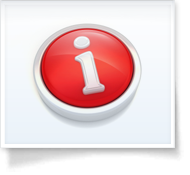 |
If you log on to Benefits.gov and already know what you’re looking for, we offer four different ways to find it quickly and easily. Remember—the only way to check your potential eligibility for the programs listed is through our simple prescreening tool, Benefit Finder.
Read on to learn which of the four search features works best for you.
- Search Field
Search term. Enter either the name of a program, part of it, or a keyword that describes what you’re looking for.
How it works. The search field is located at the top right of the website on every page. Like any other search engine, enter your keyword and click “Search.” This feature searches the Benefits.gov site and provides relevant results for your word or phrase, and creates a list of “Related Searches” at the bottom of your results.
- Browse by Category
Who’s it for? Anyone looking for a specific type of program, or all programs related to a certain topic.
How it works. Go to “Benefits” in the top navigation of the site and click “By Category” in the drop down menu that appears. Read through the 20 benefit categories and select your topic of interest.
- Browse by State
Who’s it for? Anyone seeking more information about a state-run program.
How it works. Go to “Benefits” at the top of the site and click “By State” in the drop down menu that appears. Or click the state name listed below the interactive U.S. map. Either way, you will be taken to a list of benefit programs offered in that state.
- Browse by Federal Agency
Who’s it for. You know which Federal agency offers the program(s) of your interest, or you want to see which programs each agency offers.
How it works. Go to “Benefits” at the top of the site and click “By Federal Agency” in the drop down menu that appears. Browse the Federal agencies listed and select the agency of your choice to see a list of benefits offered by that organization.
|
Back to Top
 |
| Benefits Summary |
 |
Click the links below to go directly to the benefits highlighted in this quarter’s eNewsletter:
Disaster Assistance
DisasterAssistance.gov
Disaster Legal Services
Disaster Supplemental Nutrition Assistance
General Government Benefits Assistance
Benefits.gov
Benefit Finder
Government Financial Assistance:
Grants.gov
GobiernoUSA.gov
GovLoans.gov
USA.gov
Health & Wellness:
ChooseMyPlate.Gov
Let’s Move
Healthcare.gov
Medicaid Program
Medicare Program
|
Back to Top |
|
